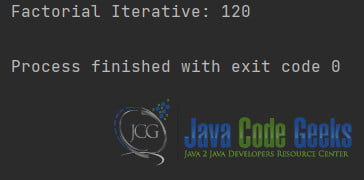Max Depth of the Java Call Stack
In this article, we will delve into the factors influencing the Max Depth of the Java Call Stack, including recursion, iteration, memory allocation, and optimization techniques.
1. Introduction
In Java, the call stack plays a crucial role in managing method calls and their corresponding local variables. Each time a method is invoked, a new frame is added to the call stack, and when a method exits, its frame is removed. This mechanism allows for proper management of method execution flow and memory allocation. However, the call stack has a finite size, and understanding its maximum depth is essential for writing efficient and error-free code.
The call stack is a fundamental concept in programming languages. It keeps track of the active method calls and their local variables during program execution. Java, being a statically-typed, object-oriented language, follows a strict procedure for managing the call stack. The depth of the call stack refers to the maximum number of method calls that can be nested before running out of stack space.
2. Recursion and Call Stack Depth
Recursion is a programming technique in which a method calls itself to solve a problem. While elegant, recursive algorithms can potentially lead to deep call stacks, causing a StackOverflowError if not managed properly.
Consider the classic example of calculating the factorial of a number:
public class RecursionExample {
public static int factorial(int n) {
if (n <= 1) {
return 1;
}
return n * factorial(n - 1);
}
public static void main(String[] args) {
int result = factorial(5);
System.out.println("Factorial: " + result);
}
}In this example, each recursive call to the factorial method adds a new frame to the call stack. The stack must hold all the intermediate values until the base case is reached. If the input value is large, the call stack could grow to a significant depth, potentially causing a stack overflow.
3. Iteration vs. Recursion
While recursion offers an elegant way to solve certain problems, it’s important to consider whether an iterative approach might be more suitable to avoid deep call stacks. Iterative algorithms use loops to repeatedly execute a sequence of instructions, reducing the need for additional stack frames.
Let’s compare the recursive factorial example with an iterative one:
public class IterationExample {
public static int factorialIterative(int n) {
int result = 1;
for (int i = 1; i <= n; i++) {
result *= i;
}
return result;
}
public static void main(String[] args) {
int result = factorialIterative(5);
System.out.println("Factorial Iterative: " + result);
}
}In this case, the iterative version doesn’t rely on the call stack to the same extent as the recursive version, potentially allowing for deeper calculations without encountering a stack overflow.
4. Memory Allocation and Stack Size
The call stack’s depth is constrained by the available memory allocated for it. This memory is allocated at the program’s start and is shared among all method calls. Therefore, the deeper the call stack, the less memory is available for each individual frame.
In some cases, you might need to increase the stack size to accommodate deeper call stacks. This can be done using the -Xss flag when running the Java Virtual Machine (JVM):
java -Xss2m YourProgram
This command sets the stack size to 2 megabytes. Be cautious when adjusting the stack size, as it directly affects the program’s memory consumption.
5. Tail-Call Optimization
Tail-Call Optimization (TCO) is a compiler optimization technique that helps mitigate the issue of deep call stacks in recursive algorithms. TCO involves reusing the current method’s stack frame for a recursive call when the call is the last operation in the method.
However, as of Java’s current version, the language specification does not require Java compilers to perform TCO. This means that even tail-recursive methods can cause stack overflows if the optimization is not applied by the compiler.
Consider the following tail-recursive factorial example:
public class TailCallOptimizationExample {
public static int factorialTailRecursive(int n) {
return factorialTailRecursiveHelper(n, 1);
}
private static int factorialTailRecursiveHelper(int n, int accumulator) {
if (n <= 1) {
return accumulator;
}
return factorialTailRecursiveHelper(n - 1, n * accumulator);
}
public static void main(String[] args) {
int result = factorialTailRecursive(5);
System.out.println("Factorial Tail Recursive: " + result);
}
}Even though the factorialTailRecursive method is tail-recursive, there’s no guarantee of TCO in Java. Therefore, it’s wise to consider other techniques to manage deep recursion.
6. Conclusion
Understanding the Max Depth of the Java Call Stack is crucial for writing robust and efficient code. Recursive algorithms can lead to deep call stacks, potentially causing stack overflow errors. Balancing recursion with iteration and considering memory allocation and optimization techniques like tail-call optimization is essential for managing call stack depth effectively.
7. Download the Source Code
This was an example of the Max Depth of the Java Call Stack and its importance in software development.
You can download the full source code of this example here: Max Depth of the Java Call Stack





